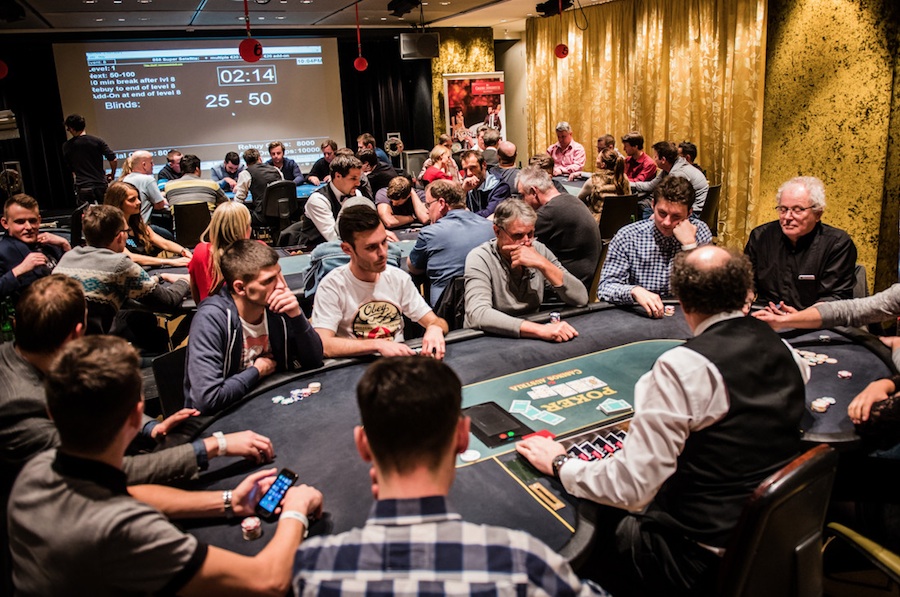Blackjack Tournament Betting Strategy
Blackjack tournament strategy eventually comes down to a balancing act: you must take enough risks to win, but only when the rewards are big enough to justify taking those risks. Strategy in tournament style blackjack differs from that of traditional blackjack because you are competing not only against the dealer, but also against other players. The following tips will help you maximize your chances of making it to the final table, and taking home the prize, in your next blackjack tournament.
Have you ever seen an experienced Blackjack player split a pair of fives facing a dealer’s face-up 8, or double down on hard 15 against a 10 showing, or cheer when the dealer drew a 3 or 4 to a soft 17? If so, you were probably watching a Blackjack tournament, because only in tournament Blackjack do such “crazy” things happen.
Playing in Blackjack tournaments requires a strategy quite different from the Basic Strategy recommended at “normal” Blackjack tables. That’s because the objective of the game is different. Instead of trying to beat the dealer, the goal in a tournament is to beat the other players at the table. You can do so only by ending up with more chips than your opponents have, so the size of their chip stacks becomes more important to your strategy than what card the dealer shows or how many 10’s remain in the deck.
Another big difference is that no matter how wildly you bet or play, your losses are limited. You cannot lose more than the entry fee you paid to join the tournament. On the other hand, you can win a huge amount, relative to the amount paid for entry, if you play your cards right. That explains why risk-taking is such a key element in tournament play. There is a limited downside and an incredibly high upside to aggressive play.
To develop a winning strategy for tournament Blackjack, the player must first know what is required to win. Most multi-table tournaments have two, three or four rounds of elimination or qualification. Small cash prizes may be paid to the winner of each table in the early rounds, but the big money is won only at the last table, where the bulk of the prize pool is divided among the finalists according to their chip rankings.
In a typical tournament with 54 players and three rounds of play, the chip leader and runner up at each table continue to the next round of play. Since chips cannot be carried over from one round to the next, there is no advantage to piling up huge stacks of chips. The only goal is to finish in the top two each time and eliminate four other players.
Blackjack Tournament Betting Strategy

Players at the table face the same dealer. Statistically, over the course of 30 hands, each player can expect to win 13, lose 14~15, and push 2~3. The dealer can be expected to catch at least one natural Blackjack during that time, as will each player. It all comes down to how much is wagered and when.
The 30 hands can be thought of in three stages—opening, middle, and final. In each stage, the player must decide whether to be aggressive or conservative, both in amount wagered and willingness to take risks in play. This will depend on how far ahead or behind he/she is in chip count.
The opening 5~7 hands reveal who the players are. A few “go for broke” in the early rounds, while some opt to stick with the smallest wagers possible. This stage can be used to identify threats, leaders, and followers, those who play well and anyone who plays poorly.
Blackjack Tournament Betting Strategy
The middle 18~20 hands are all about positioning, building a stack of chips or protecting it from erosion. Many players opt to use card counting as their guide to betting; they wager heavily into a deck rich in 10’s and back off to the minimum when it is lean. Others consider betting position as part of their strategy, taking fewer chances when on “first base” and playing more aggressively when on “third.”
The final five hands of the round determine the winner. A player in or near the lead in chip count can dominate wagering, forcing others to play catch up. By the final hand, it should be evident how much to bet and how to play the cards. Some players will find that betting the maximum and doubling down on whatever shows, is the only way to gain the lead. This is when the “craziness” occurs—frantic attempts to get as many chips as possible on the table. But remember, it is the player who has the most remaining that wins. Play accordingly.